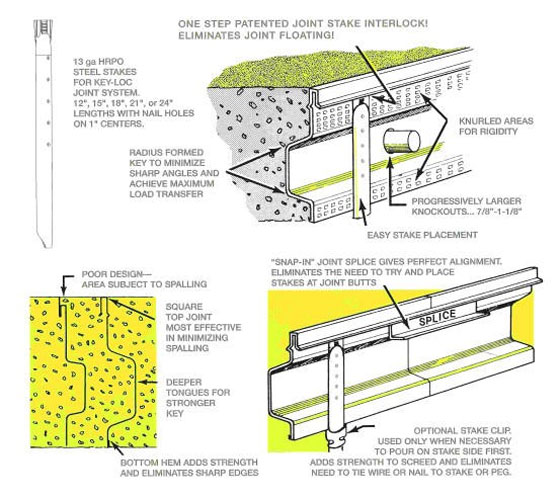Construction joint, expansion joint, contraction joints and isolation joints are the four types of joints generally found in Concrete Construction. They prevent the concrete from cracking. To get the optimum result, the exact position should be clearly identified before placing the construction joints in a concrete slab. Additionally, there are several types of joints in Concrete Structure, as stated below.
Materials for joints in water retaining structures and water tight structures:
- Materials for joints in water preserving structures and water resistant structures for sewage and wastewater treatment will safeguard the construction from ethereal and close microbiological attack as well as gasoline, diesel oil, dilute acids and alkalis like hazardous materials.
- Materials for joints in water preserving structures for drinkable and fresh water will adhere to the obligations of BS 6920.
Joint filler: Joint filler should be solid, elastic, single-thickness, non-decaying filler. Full depth of joint filers is designed to protect the joined ends. Joint filler for joints should be waterproof in water preserving structures and water repellent structures.
Bitumen solution: Bitumen composite for joints in water preserving structures and water-repellent structures will adhere to BS 3416. Bitumen composite for surfaces alongside which drinkable or fresh water will be preserved or transmitted, should adhere to BS 3416, type II.
Joint sealant: Joint sealant provides an effective and durable solution in concrete construction.
Joint sealant will maintain a grade to cope with the environmental conditions of Hong Kong and work perfectly over a temperature range of 0°C to 60°C. Joint sealant will remain grey for exposed joints.
Joint sealant except cold-applied bitumen rubber sealant will contain the following:-
- A gun grade intended for horizontal joints, vertical joints and for disposed joints and having length 15 mm wide or less.
- A pouring grade for horizontal joints having span over 15 mm.
Polysulphide-based sealant refers to a cold-applied two-part sealant that adheres to BS 4254. Polysulphide-based sealant meant for expansion joints in water preserving structures and water-resistant structures must contain a minimum 20% transverse butt-joint movement.
- Polyurethane-based sealant refers to a cold-applied two-part sealant that adheres to the performance requirements of BS 4254.
- Hot-applied bitumen rubber sealant shall compliant with BS 2499, type N1.
- Cold-applied bitumen rubber sealant will be similar as proprietary type.
- In table 1 given below, the description of Joint sealant for joints in water preserving structures and water resistant structures is provided.
- The joint sealant manufacturer approves Primers and caulking material, to be applied with joint sealant, should be proprietary type.
- Different types of joint sealant and primers which are combined with each other, will be congruent in nature.
Bond breaker tape: The Joint sealant manufacturer and the Engineer recommended and approved the Bond breaker tape like a proprietor type. The Bond breaker tape refers to a polyethylene film containing adhesive on one side and remains to be the complete width of the notch.
Bearing strip for sliding joints: The engineer recommended the Bearing strip for sliding joints that encompasses two plastic strips of a proprietary kind. These two plastic strips will protect from all weather conditions as well as chemicals to which the construction will be dependent devoid of weakening the reaction, sturdiness or utility of the strips.
Once it is set up, no maintenance work is required. The strips can combat with a vertical load of atleast three hundred kN/m2 and contain a most stable friction of 0.3 under a persistent cutting off force.
Water stops or Water stoppers: Water stops will range from natural or plastic rubber or extruded polyvinyl chloride and shall consist of the properties of density, hardness, lastingness, water absorption. Water stops, as well as intersections, educers and junctions, shall be of a proprietary type as recommended by the Engineer.
Construction joints are formed with the use of the specified materials. It will ensure that a better perception of material and proper choosing of water proofing material for various water retaining structures consisting of a durable waterproof system.

~~~~~~~~~~~~~~~~~~~~~~
Published By
Rajib Dey
~~~~~~~~~~~~~~~~~~~~~~
No comments:
Post a Comment